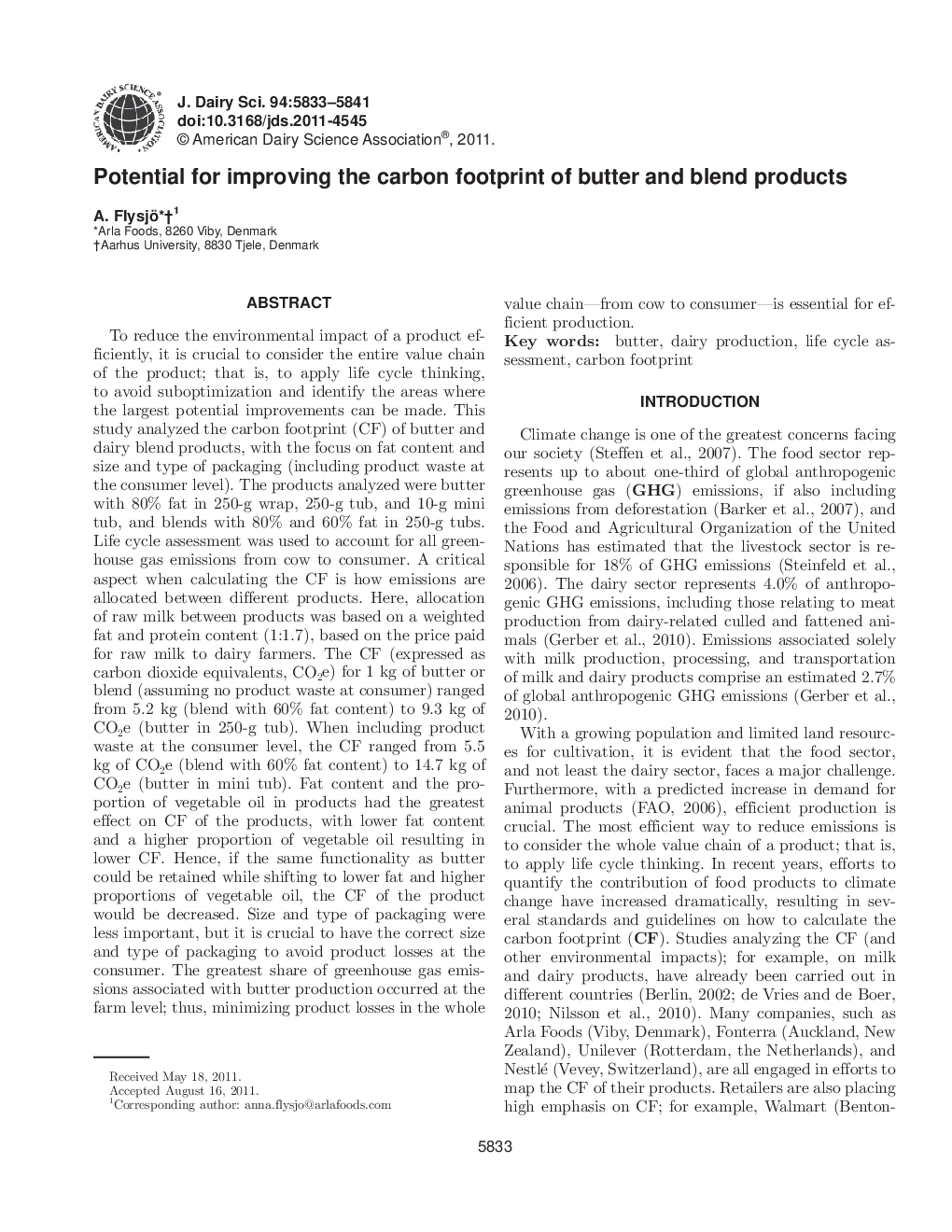| Article ID | Journal | Published Year | Pages | File Type |
|---|---|---|---|---|
| 10981635 | Journal of Dairy Science | 2011 | 9 Pages |
Abstract
To reduce the environmental impact of a product efficiently, it is crucial to consider the entire value chain of the product; that is, to apply life cycle thinking, to avoid suboptimization and identify the areas where the largest potential improvements can be made. This study analyzed the carbon footprint (CF) of butter and dairy blend products, with the focus on fat content and size and type of packaging (including product waste at the consumer level). The products analyzed were butter with 80% fat in 250-g wrap, 250-g tub, and 10-g mini tub, and blends with 80% and 60% fat in 250-g tubs. Life cycle assessment was used to account for all greenhouse gas emissions from cow to consumer. A critical aspect when calculating the CF is how emissions are allocated between different products. Here, allocation of raw milk between products was based on a weighted fat and protein content (1:1.7), based on the price paid for raw milk to dairy farmers. The CF (expressed as carbon dioxide equivalents, CO2e) for 1Â kg of butter or blend (assuming no product waste at consumer) ranged from 5.2Â kg (blend with 60% fat content) to 9.3Â kg of CO2e (butter in 250-g tub). When including product waste at the consumer level, the CF ranged from 5.5Â kg of CO2e (blend with 60% fat content) to 14.7Â kg of CO2e (butter in mini tub). Fat content and the proportion of vegetable oil in products had the greatest effect on CF of the products, with lower fat content and a higher proportion of vegetable oil resulting in lower CF. Hence, if the same functionality as butter could be retained while shifting to lower fat and higher proportions of vegetable oil, the CF of the product would be decreased. Size and type of packaging were less important, but it is crucial to have the correct size and type of packaging to avoid product losses at the consumer. The greatest share of greenhouse gas emissions associated with butter production occurred at the farm level; thus, minimizing product losses in the whole value chain-from cow to consumer-is essential for efficient production.
Related Topics
Life Sciences
Agricultural and Biological Sciences
Animal Science and Zoology
Authors
A. Flysjö,
